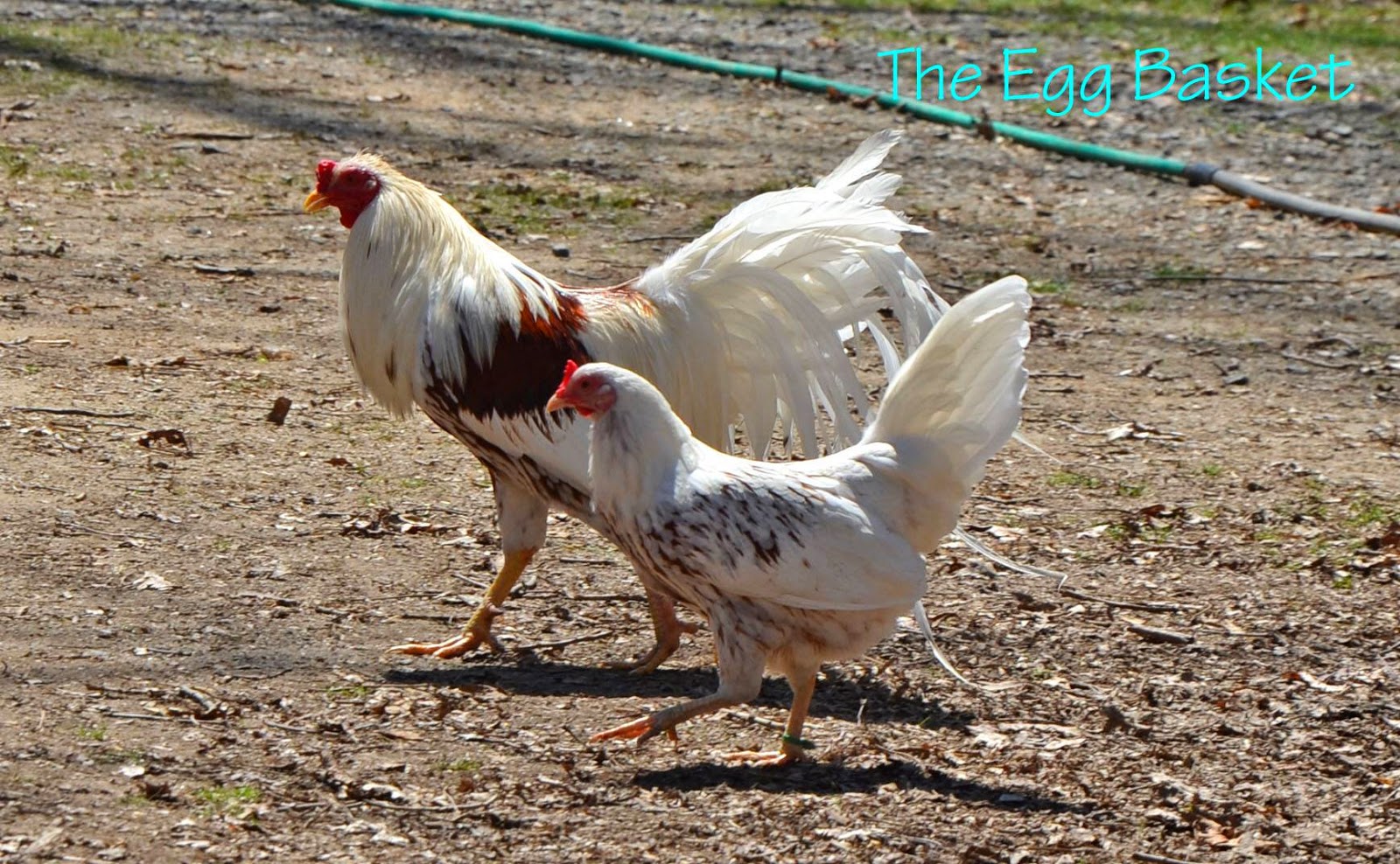For Christmas and my birthday this year, Chuck surprised me with the last thing I expected him to purchase on his own, new chicken breeds! Not just new breeds but an entirely new class of chickens with much project potential! He talked to the breeders about coop and run requirements and ensured I was all set with those too. Spoiled? You betcha'! Please welcome our newest chickens, our new longtail breeders! The first of our new long tail breeds is the Red Shoulder Yokohamas.
Red Shoulder Yokohamas
My first thought when I saw Luke, Peace, and Hope was, "Striking!" They are truly glorious and make me feel as if I'm close to a wild eagle. They're an extremely attractive exhibition breed with long tails and saddle feathers.
Yokohamas are named for the port they were originally exported from in the late 1800s. As with all three of my new longtail breeds, they were developed from Japanese origins. It's thought that the Yokos of today were mostly created from the Japanese Minohiki ("Saddle Dragger" in Japanese) with a bit of Onagadori crossed in. Others have said that once the French missionary Girad exported the Minohiki to Europe, the German breeders created the Yokohama from crossing them with Malay, Phoenix, Sumatra, and other common game fowl. Either way, though they were created from game lines, the Yokos are kept primarily for ornamental purposes.
The Yokohamas were accepted into the American Poultry Association's Standard of Perfection in 1981 in two varieties, the White and the Red Shoulder. We breed and raise the Red Shoulder variety. They are primarily white with substantial reddish brown highlights on their shoulders, wings, and breast. They have small, bright red walnut combs and earlobes with the same color small or non existent wattles. Their beak, shanks, and toes should be yellow and their eyes reddish bay to orangey red.
Generally alert but easy going and docile, Yokohamas are fairly slow to mature. To maintain the roosters' long and lush tail and saddle feathers, they're best kept in dry, well-bedded coops with high perches. These lovely fowl bear confinement well but are also well suited for free ranging situations. The roosters are known to be rooster aggressive so you'll want to limit your flock to one.
The hens are quiet, are known to go broody, and be excellent mothers. They lay small to medium tinted or white eggs. The frequency of their laying depends greatly on their diet. To keep the hens laying consistently and to encourage proper tail growth in the roosters, diets higher in animal and fish protein and fat.
We currently do not have any Yokohama chicks nor juveniles for sale but fertile hatching eggs can be purchased via our online store.
I'll be introducing you'll to our other two new longtail breeds very soon!
Blessings,
Tiffany





No comments:
Post a Comment